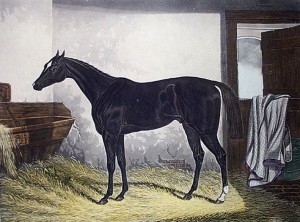 Now that you’ve had some time to look at the pedigrees of the 9 great horses from my last edition, Solving the Puzzle let me explain what they all have in common. Just keep in mind one important idea as you read this edition; A cluster mare represents concentrated classic speed!
Now that you’ve had some time to look at the pedigrees of the 9 great horses from my last edition, Solving the Puzzle let me explain what they all have in common. Just keep in mind one important idea as you read this edition; A cluster mare represents concentrated classic speed!
The Salient trait possessed by all of these great horses is that their dams are cluster mares, and if this were not enough, their sires are the sons of cluster mares. In effect, these horses have cluster mares as close up in their pedigrees as it is possible to find them. On the female side of the pedigree you can’t have a cluster mare closer than being the dam of the runner. On the male side the closest a mare can be is the dam of the sire. All of these great horses are bred on exactly this pattern.
At this point I’d like to point out what makes a cluster mare according to Dennis Craig’s definition. According to Dennis Craig, “A cluster mare is a broodmare who, within six generations, has produced two or more winners of five or more of the eight most important races in the calendar.” Taking this one step further Dennis Craig determined that a Star mare is “a broodmare who, within six generations, has produced two or more winners of three or four of the eight most important races in the calendar.” Why Dennis Craig chose to use these exact definitions to determine Cluster and Star mare status remains a mystery. I’ve searched through his written work but nowhere is this mentioned. However, the only important factor is that it works. I’d be interested to know why he chose 6 generations rather then 5 or 7. As breeders we can all make our own determinations for it is not the exact measuring of the number of classic winners tracing to a certain mare within a proscribed number of generations that is of primary importance. What is of primary importance is the idea of a Cluster Mare. As we proceed with this odyssey through the history of the Thoroughbred (because that is what this web site will prove to be) you will become aware that it is the Cluster and Star mares which are the building blocks of the breed.
In the coming weeks I’ll be showing you horses that although not technically cluster mares should be considered such because of certain anomalies. For now let’s get back to an examination of the 9 great horses put forth last week as examples. We begin with Hermit who was a foal of 1864. If you are not aware of him or of the stature he attained back during the Victorian Era let me explain. Hermit won the Epsom Derby in 1867 but more importantly he was the leading sire in Great Britain and Ireland for 7 consecutive years from 1880 through 1886. He had a sire record not unlike the more modern Bold Ruler. If Hermit had lived today and had stood most of his life with a $250,000 stud fee, (which would be reasonable since he was 7 consecutive times leading sire), he would generate in excess of 250 million dollars in stud fees. It is in our interest to see if we can determine from where this horse derived his great ability both in racing and breeding. We begin with his dam Seclusion who we have already mentioned is a cluster mare. These are the horses that allowed her to achieve that status.
| Horse | Races Won | Number of generations from Seclusion |
| Hermit | Derby | one |
| Elizabeth | 1,000 Guineas | two |
| Minoru | 2,000 Guineas, Derby | five |
| Grand Parade | Derby | six |
Seclusion achieved cluster mare status by having the horses listed above win five of the most important races on the calendar within 6 generations.
When we look at Hermit’s sire Newminster we find that his dam Beeswing achieved cluster mare status by producing the following horses.
| Newminster | St. Leger | One |
| Nunnykirk | 2,000 Guineas | One |
| Melton | Derby, St. Leger | Five |
| Ayrshire | Derby, Eclipse, 2G | Five |
| Mrs. Butterwick | Oaks | Five |
One last observation concerning Hermit’s pedigree should be noted. His grandsire Touchstone, the sire of Newminster is also the son of another cluster mare, Banter. Is it any wonder that with this concentration of classic speed close up in his pedigree that Hermit was a Classic winner and a leading sire.
Of course, when one makes such a discovery it then becomes logical to look for confirmation in the form of another great horse bred on exactly the same pattern. For that confirmation we’ll next look at the pedigree of the immortal Man O’ War. His dam is Mahubah, is a cluster mare. His sire is Fair Play whose dam Fairy gold is another cluster mare. And just as in the case of Hermit where his sire Newminster was sired by a stallion (Touchstone) whose dam was also a cluster mare, so is Man O’ War’s grandfather, Hastings the son of a cluster mare. Let’s take a look at the cluster mares in Man O’ War’s pedigree to see how they achieved cluster mare status. First, we’ll look at his dam Mahubah
| Horse | Races won | Generations back |
| Man O’ War | Preakness, Withers, Belmont, Travers | 1 |
| My Play | Jockey Club Gold Cup | 1 |
| Assault | Derby, Preakness, Belmont | 4 |
At this point I’d like to advise you that the most important races designated by Dennis Craig back in 1964 that determined which mares would become cluster mares have changed. The powers that be in American Racing have allowed some of our most prestigious races to decline to the point where they have become irrelevant. One of the races won by Man O’ War was the Withers Stakes. Back in his day it was our equivalent of the 2,000 Guineas or the Poule d’ Essai des Poulains, now it is irrelevant. The same is true of the American Derby and the Arlington Classic. In a moment I’ll show you the horses that made Plucky Liege a cluster mare. One of them is Roman Brother who won the Jockey Club Gold Cup and the American Derby back in 1964. From 1964 through 1967 the winners of the American Derby were Roman Brother, Tom Rolfe, Buckpasser, and Damascus all of which were Horse of the Year except Tom Rolfe who was Champion three-year-old colt. From 2009 through 2012 the winners of the same race were Reb, Workin for Hops, Willcox Inn, and Cozzetti. Need I say more? Other major American Races that were downgraded to obscurity or removed are the Saratoga Cup, and the Arlington Classic. This year saw the demise of another great race, the filly Belmont Stakes, otherwise known as The Coaching Club American Oaks. At a later date I’ll write an essay about the decline of American racing and the “fools” that are behind it.
Getting back to Man O’ War’s pedigree we have shown that his dam Mahubah is a cluster mare. We’ll now look at the dam of his sire which is Fairy Gold. Fairy Gold achieved cluster mare status by being the ancestress of the following:
| Horse | Races won | Generations back |
| Friar Rock | Belmont, Saratoga Cup | 1 |
| Rock View | Withers, Travers | 2 |
| Corrida | Arc, twice | 3 |
| Coaraze | French Derby | 4 |
| Galcador | Epsom Derby | 6 |
| Galgala | French 1,000 Guineas.“Inbred to Fairy Gold” | 6 |
As in the case of Hermit, Man O’ War’s grandsire Hastings is also the son of a cluster mare in this case Cinderella. One difference between Hermit and Man O’ War is that in the case of Man O’ War’s dam Muhubah, her sire Rock Sand was also the son of a cluster mare. That mare named Roquebrune was not only a cluster mare but so was her dam St. Marguerite. You should be aware that Dennis Craig showed St. Marguerite to be a cluster mare in his book but did not show her daughter Roquebrune as having achieved the same status. Likewise, he shows Ellen Horne as being a cluster mare but not her daughter Rouge Rose when in fact all are cluster mares.
To get an idea of the effect of cluster mares on Man O’ War’s pedigree consider this. In the first three generations of Man O’ War’s pedigree there are 7 mares, and four are cluster mares. If what I postulate about cluster mares is correct (that they represent concentrated classic speed) then doesn’t Man O’ War’s pedigree make complete sense? It might be a good idea to print the pedigrees of these nine great horses and highlight the cluster mares. In the case of Man O’ War you will find 8 cluster mares within the first 5 generations. They are Mahubah, Fairy Gold, Cinderella, Roquebrune, Rouge Rose, St. Marguerite, Ellen Horne, and St. Angela.
Even those who are not experts on Thoroughbred history or genealogy know the name of Sceptre. She was an extraordinary racemare having captured the 1,000 Guineas, 2,000 Guineas, Oaks, and St. Leger. When you consider that her owner one Robert Standish Siever was a notorious gambler, frequently pressed for cash, and that he also served as her trainer you begin to realize how great Sceptre was. It wasn’t as if she had a great trainer like John Porter planning her campaigns, she was trained by a novice.
Sceptre was produced by Ornament a full sister to unbeaten Triple Crown winner Ormonde. Ornament achieved cluster mare status with these horses.
| Horse | Races won | Generations back |
| Sceptre | 1,000 Guineas, 2,000 Guineas 2,000 Guineas |
1 |
| Craig An Eran | 2,000 Guineas | 3 |
| Buchan | Eclipse (twice) | 4 |
| Sunny Jane | Oaks | 3 |
| Tiberius | Ascot Gold Cup | 5 |
It’s easy to see that Ornament gave her daughter Sceptre a powerful dose of classic speed. From her sire’s side of the family Sceptre inherited an equal amount if not even more classic speed. Sceptre’s sire Persimmon was produced by Perdita II. Aside from his accomplishments on the turf Persimmon was leading sire on four occasions in England and Ireland, and leading broodmare sire four times as well. Below are the horses that made Perdita II a cluster mare.
| Horse | Races won | Generations back |
| Persimmon | Derby, St. Leger, Eclipse, Ascot Gold Cup(twice) | 1 |
| Diamond Jubilee | 2,000 Guineas, DerbySt. Leger, Eclipse | 1 |
Peridta II established quite a record, two runners that won nine of the most important races on the calendar. Sceptre was a great racehorse, one of the best of all time, but without the prism of cluster mares you would not realize how well bred she really is. If you did not have knowledge of the concept of a cluster mare you would not know that of the 7 mares present in Sceptre’s first 3 generations, all 7 were cluster mares.
The next horse we will examine is Gallant Fox who won the Triple Crown in 1930. Keep in mind that the races that determined cluster mare status for his dam were different then ones we would use today. The important races Gallant Fox won in 1930 were the Kentucky Derby, Preakness Stakes, Belmont Stakes, Arlington Classic, Saratoga Cup, and Jockey Club Gold Cup. Since Gallant Fox won six of the required races the only requirement for his dam Marguerite to reach cluster mare status was to produce one more winner of another important race. This was accomplished when Petee-Wrack a half-brother to Gallant Fox annexed the Travers Stakes and the Metropolitan Handicap. Marguerite only needed 2 winners of five of the most important races to become a cluster mare and she had two that won eight of those races. Like Hermit and Man O’ War, Gallant Fox had a dam which was a cluster mare and a sire that was produced by another cluster mare. In the case of Gallant Fox his sire Sir Gallahad III was a son of the great Plucky Liege who achieved cluster mare status by producing the following.
| Horse | Races won | Generations back |
| Admiral Drake | Grand Prix De Paris | 1 |
| Bois Roussel | Epsom Derby | 1 |
| Sir Gallahad 3rd | French 2,000 Guineas | 1 |
| Roman Brother | Jockey Club Gold Cup & American Derby | 5 |
Gallant Fox was the only Triple Crown winner to sire another Triple Crown winner when in 1932 he sired Omaha. Omaha won the Triple Crown in 1932 and also won the Arlington Classic when it was one of the races used as cluster mare criteria. Since Omaha himself won four of the important races on the calendar his dam only needed one more runner to win one of the important races to achieve cluster mare status. She did this when Omaha’s full brother Flares won the Ascot Gold Cup. Since Omaha’s dam Flambino was now a cluster mare his pedigree then mirrored that of Hermit and Man O’ War in that his dam was a cluster mare, his sire was produced by a cluster mare and so was his grandsire. Keep in mind if you were not aware of cluster mares you could not see any connection between these great horses.
Up to this point we’ve examined three great horses and all are bred exactly alike when considering the implication of cluster mares. Moving on, the next two horses we’ll look at are the masterpieces of the “Wizard of Dormello”, Federico Tesio. The horses are Nearco and Ribot both of which were undefeated and had a breed altering impact as stallions.
Nearco is the result of breeding Pharos to Nogara by Havresac. In this case Nogara is a cluster mare while Pharos’ dam Scapa Flow is a star mare. If you remember a star mare is one that has two or more offspring tracing to her within six generations that have won three or four of the most important races on the calendar. In addition to Pharos, who ran 2nd in the Epsom Derby, Scapa Flow produced Fairway (Eclipse & St. Leger), and Fair Isle (1,000 Guineas). One of the reasons she never achieved cluster mare status is she only produced two daughters. However, when you consider that Fairway and Pharos became leading sires you can understand the genetic power of this mare. Nogara achieved cluster mare status by producing the following:
| Horse | Races Won | Generations back |
| Nearco | Grand Prix De Paris | 1 |
| Ity. Derby, 2,000 Guineas | 1 | |
| Niccolo Dell ‘Arca | Ity. Derby, St. Leger | |
| 2,000 Guineas | ||
| Nervesa | Italian Oaks | 1 |
The other great horse bred by Federico Tesio was Ribot and he was by Tenerani-Romanella by El Greco. Ribot’s dam was a cluster mare and achieved that status by producing the following;
| Horse | Races Won | Generations back |
| Ribot | Prix de l’Arc de Triomphe, (twice) Gran Premio del Jockey Club Gran Premio di Milano King George VI & Queen Elizabeth Stakes |
1 |
| Raeburn | Italian 2,000 Guineas | 1 |
| Ruysdael | Derby Italiano Gran Premio d’Italia Gran Premio del Jockey Club |
2 |
Ribot’s sire Tenerani received a powerful dose of classic speed from his dam Tofanella who is also a cluster mare. The horses that made her a cluster mare are:
| Horse | Races Won | Generations back |
| Tenerani | Italian Derby & St. Leger , Gran Premio d’Italia Gran Premio Del Jockey Club Gran Premio di Milano |
1 |
| Trevisana | St. Leger Italiano Gran Premio d’Italia |
1 |
| Tadolina | Oaks d’Italia Italian 1,000 Guineas |
2 |
| Tavernier | St. Leger Italiano | 2 |
| Tiepolo | St. Leger Italiano | 2 |
| Tiziano | St. Leger Italiano | 2 |
| Tokamura | Italian 1,000 Guineas St. Leger Italiano |
1 |
| Toulouse Lautrec | Gran Premio d’Italia Gran Premio di Milano |
2 |
When you concentrate all of this classic winning genetics into one individual is it any wonder that you come up with a Ribot?
Nasrullah is a horse everyone reading this web page should be thoroughly familiar with. We already know that his sire Nearco was loaded with classic speed from the close up presence of the cluster mares Nogara and Scapa Flow. If Nasrullah’s dam Mumtaz Begum is a cluster mare then he has the same pedigree pattern as the previously listed horses whereas cluster mares are concerned. Of course she is a cluster mare and the horses leading to achieving this are:
| Horse | Races Won | Generations back |
| Kalamoun | French 2,000 Guineas | 4 |
| Risen Star | Preakness Stakes Belmont Stakes |
5 |
| Shergar | Derby, Irish Derby | 6 |
| Ginetta | French 1,000 Guineas | 3 |
| Octagonal | WS Cox Plate AJC Derby |
5 |
| On The House | 1,000 Guineas | 6 |
Nasrullah wasn’t a classic winner probably due to his temperament (I once saw a picture of Nasrullah captioned “Nasrullah impersonating a mule”.) but with a great concentration of classic speed he would become leading sire on both sides of the Atlantic. In fact, like Sceptre, all of the mares in Nasrullah”s first 3 generations are Cluster or Star mares.
Moving on, I think I’ve saved the best for last. Then next two horses we’ll examine are Chelandry and Buchan. The reason I find them fascinating is they are both somewhat obscurely bred. Now if I was sitting across the kitchen table from you discussing pedigree I would ask you this question. Have you heard of Chelandry and Buchan? If you said yes I would ask you what you knew about them. In all likelihood unless you are really into Thoroughbred pedigrees you wouldn’t know who they are at all, or you might have very limited knowledge of their importance, In other words they are not as readily known as the first 7 great horses I’ve already presented to you. But, that doesn’t mean that they are not very important. In fact, Chelandry is one of the most important broodmares in the history of the breed. She is so important that I will devote the next addition of Broodmares Inc. just to her. I have to admit that I am intrigued by this obscurely bred mare. When I say obscurely bred what do I mean? Well to begin, her sire is Goldfinch, ever heard of him? Well not unlike Glencoe, Goldfinch was exported to the United States in 1894 after siring one crop in England. Just as Glencoe left behind the great broodmare Pocahontas from his one Great Britain sired crop Goldfinch left behind the great broodmare Chelandry. Unfortunately for Goldfinch he was purchased by James Ben Ali Haggin and stood at his Rancho del Paso in California. You must consider how awful the prospects were for a Thoroughbred stallion standing in California in the late 1890’s far from the breeding center in Kentucky and with no means of transportation to move mares. By now you should have a suspicion of what Goldfinch had to offer genetically to a super broodmare like Chelandry. If you were to guess that his dam was a cluster mare you would be absolutely right. In fact, his dam Thistle produced the English Triple Crown winner, Common. The horses that brought her this status are:
| Horse | Races Won | Generations back |
| Common | Derby, St. Leger 2,000 Guineas |
1 |
| Thistle | St. Leger | 1 |
| Witch Elm | 1,000 Guineas | 4 |
| Love in Idleness | Oaks | 4 |
Of course Thistle didn’t provide Chelandry with all of her classic ability because if you remember all of the horses highlighted in this addition of Broodmares Inc. are bred exactly alike meaning Chelandry’s dam must be a cluster mare also. And so she is, for Illuminata by Rosicrucian is a cluster mare. The following are the horses that made Illuminata a cluster mare;
| Horse | Races Won | Generations back |
| Ladas | Derby, 2,000 Guineas | 1 |
| Chelandry | 1,000 Guineas | 1 |
| Cicero | Derby | 2 |
| Neil Gow | 2,000 Guineas, Eclipse | 2 |
| Vaucluse | 1,000 Guineas | 3 |
| Pogrom | Oaks | 4 |
| Saucy Sue | Oaks, 1,000 Guineas | 4 |
| Book Law | St. Leger | 4 |
| Rhodes Scholar | Eclipse Stakes | 5 |
| Pay Up | 2,000 Guineas | 5 |
| Galatea II | Oaks, 1,000 Guineas | 6 |
| Ocean Swell | Ascot Gold Cup | 5 |
| Aquino II | Ascot Gold Cup | 6 |
So when you take into consideration cluster mares, Chelandry isn’t obscurely bred at all. In Fact, she is bred exactly like the previously mentioned 7 great horses.
Finally, we’ll close this edition of Broodmares Inc. with one of my favorite obscure cluster mares. Actually, the mare in question is one of those Star mares that I designate a cluster mare for my own use even though she technically isn’t one. The final horse we’ll examine is Buchan and his dam is the unusual and obscurely bred Hamoaze. Again, if we were sitting across from each other I’d ask you, “What do you know about Hamoaze?” Unless you are a pedigree aficionado the answer is going to be “nothing”. However, there is a lot that can be learned from her and that is why I included her son Buchan as one of the 9 great horses bred exactly alike when considering the influence of cluster mares. She also ties into Chelandry in that both are by obscure stallions which did not get much opportunity at stud. Chelandry is by Goldfinch while Hamoaze is by Torpoint.
In the overleaf of his book Breeding Racehorses From Cluster Mares, Dennis Craig suggests the following: “He argues persuasively that Classic winners often are not worth the inflated prices paid for their stud services, and recommends the use of less fashionable non-classic winning stallions who have some of the same Star-Cluster mares close up in their pedigrees as the brood mares with whom it is proposed to mare them.
When I wrote my book Breeding by Design, both Chelandry and Hamoaze were featured. My book essentially is about how to breed a cluster mare although when I was writing it I wasn’t thinking in the term cluster mare. It was more like I wanted to find out how to breed a matriarch or a foundation mare. I wasn’t thinking in the terms outlined by the quote listed above from Dennis Craig. As it turns out both Chelandry and Hamoaze fit Mr. Craig’s quote exactly. Let me explain. Chelandry’s great grandsire is Bend Or. The progression is from Goldfinch to Ormonde to Bend Or. Bend Or’s granddam is the cluster mare Ellen Horne. Chelandry’s forth dam is also Ellen Horne. In effect Chelandry is the result of taking a non-classic winning stallion which carries the stain of Ellen Horne in the male line and crossing it to a broodmare that carries the same Ellen Horne strain in the direct female line.
The same holds true in the case of Hamoaze. Her sire is the non-classic winning Torpoint (best he could do was 3rd in the Ascot Gold Cup) who traces down his female line to cluster mare Miss Agnes. Torpoint also possesses a collateral strain of Miss Agnes through the stallion Tibthorpe. The 6th dam of Hamoaze is Miss Agnes. In the case of both Chelandry and Hamoaze obscure non-classic winning stallions were used to reinforce the blood of a cluster mare resulting in the breeding of another cluster mare.
Getting back to Hamoaze, I should explain why I consider her to be a full fledged cluster mare even though she is only a star mare according to Dennis Craig’s criteria. Remember in horse breeding there are always exceptions and that the idea is not to adhere to a rigid set of rules but to follow the conception. No one can tell you what makes up a cluster or Matriarch mare; that will always be up to you. Whatever helps you breed classic winners is fine, as long as it works. I consider Hamoaze a cluster mare for the following reasons although on paper she only had two winners of three of the most important races. To begin, she never produced a daughter. Since she had no daughters she needed to produce 2 winners of 5 of the most important races from her sons, and she almost did it. Hamoaze produced four sons named Buchan, St. Germans, Tamar, and Saltash all of which were stakes winners. Buchan, St. Germans and Tamar all ran 2nd in the Epsom Derby. Buchan finished 2nd in the 2,000 Guineas and 3rd in the St. Leger as well. Hamoaze became a star mare because Buchan won the Eclipse Stakes twice and Saltash won it once.
I still would not have put aside Dennis Craig’s criteria and pronounced Hamoaze a cluster mare (at least in my own mind) except for one other factor. Remember, cluster mares represent a concentration of classic speed and you would expect that to be passed on. It couldn’t be passed on by her daughters since she didn’t have any, but her sons made up for it. Buchan was leading sire in Great Britain and Ireland and St. Germans was leading sire in the United States. In view of this I have no doubt that had Hamoaze produced a daughter or two they would have produced the requisite number of classic winners to have officially made her a cluster mare according to the criteria set out by Dennis Craig.
To conclude, the horse in question is really Buchan, and not his dam Hamoaze. When we look at his sire Sunstar we find that his dam Doris is also a cluster mare. She achieved this with the following horses:
| Horse | Races Won | Generations back |
| Sunstar | Derby, 2,000 Guineas | 1 |
| Princess Dorrie | Oaks, 1,000 Guineas | 1 |
| Thirteen of Diamonds | Irish Derby | 5 |
Now you have had the opportunity to look at the pedigrees of 9 great horses through the prism of cluster mares. I could show you many others but that would be redundant. In each addition of Broodmares Inc I’ll be showing you how to breed cluster mares (Matriarch’s or Foundation mares or whatever you may like to call them) and how they fit into the pedigree of great horses.


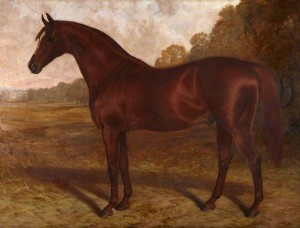
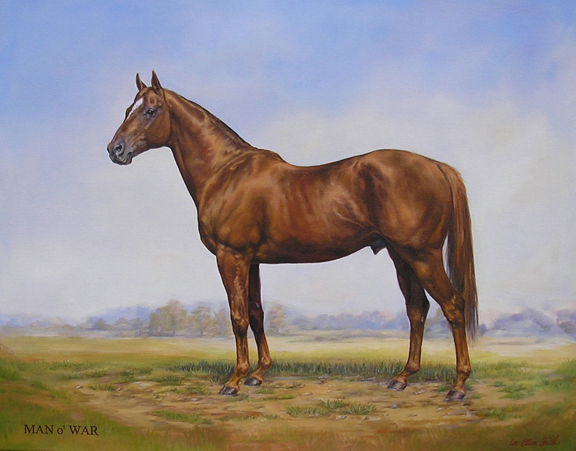
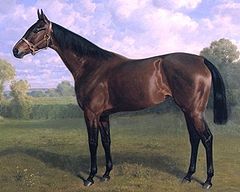

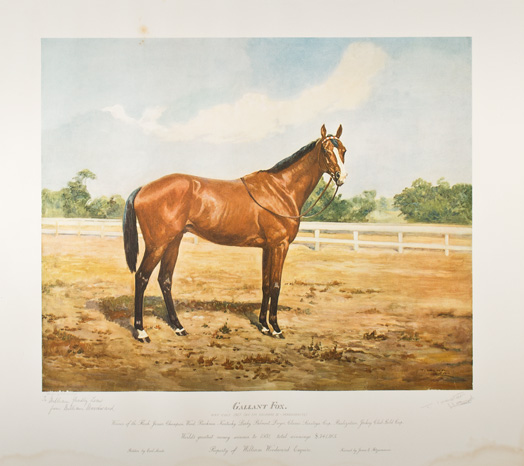
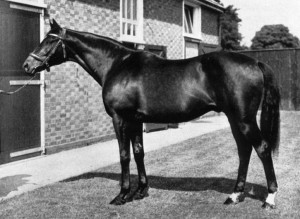

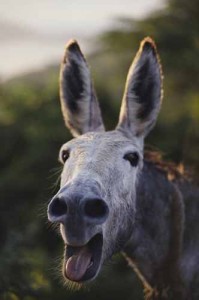
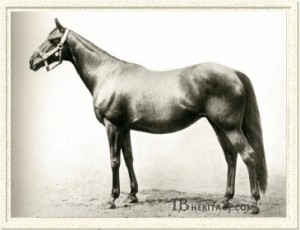
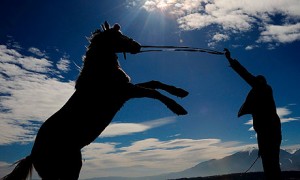

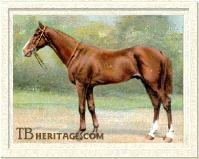
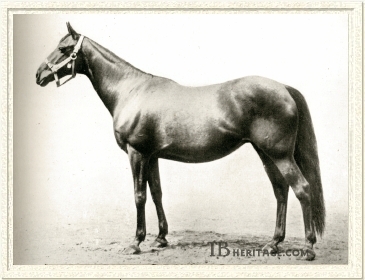
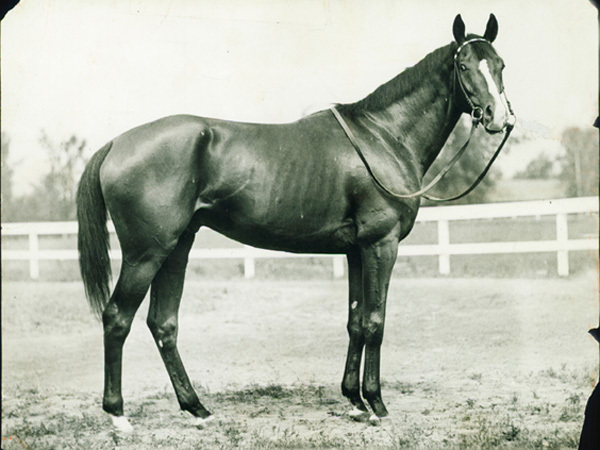
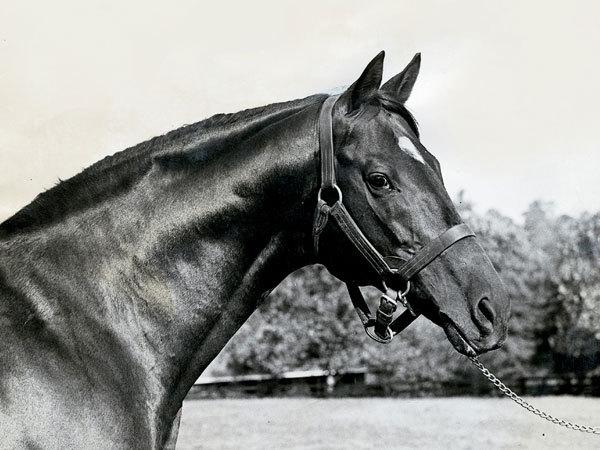
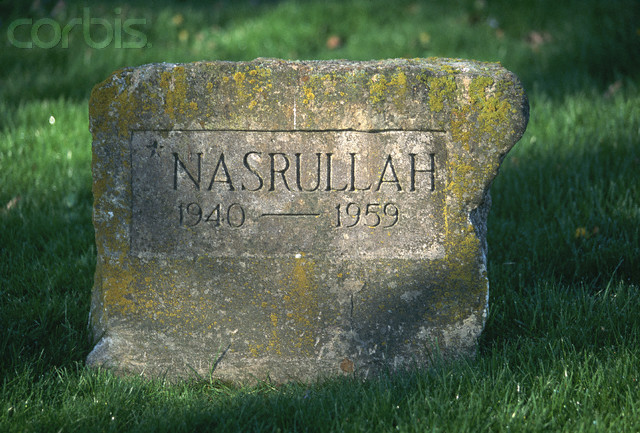

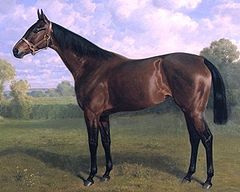
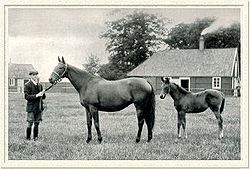
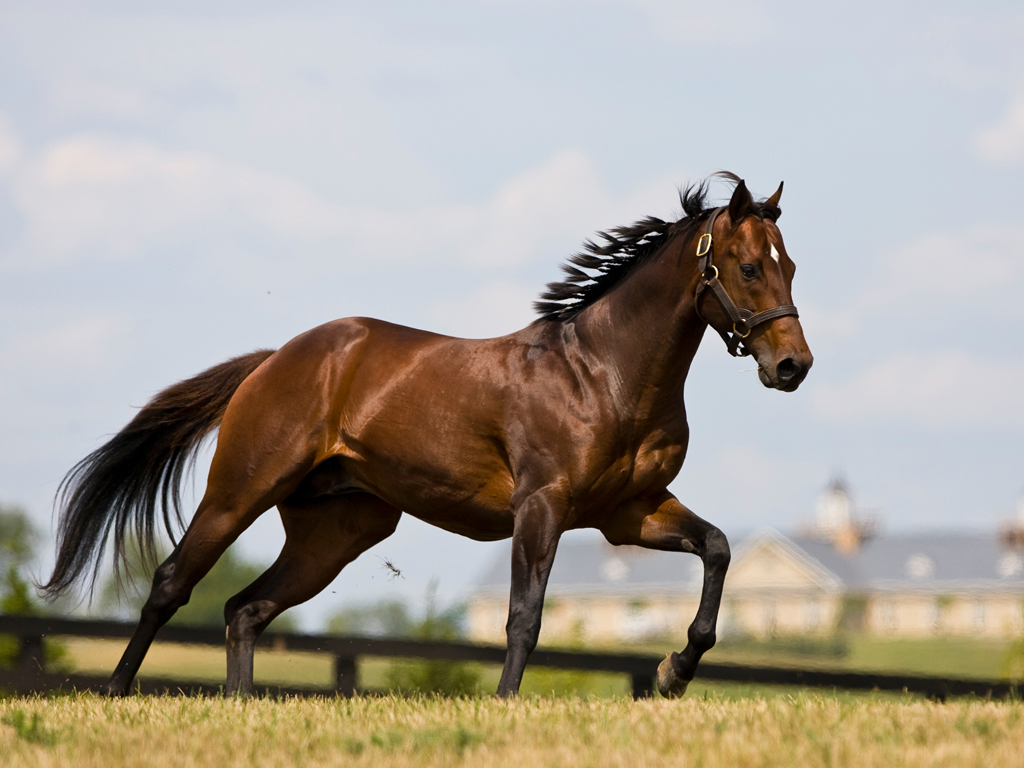


1 comment
alan kline
September 21, 2013 at 9:02 pm (UTC 0) Link to this comment
great job floyd can’t wat to read your posts. long time breeder Alan S Kline